Can you cut 1 Tonne of carbon pollution out of your life?
Take the challengeWritten by
These images are a selection of photos taken recently near Lizard Island off the north Queensland coast. They document the ongoing bleachingof the Great Barrier Reef as ocean temperatures continue to be driven upward by climate change.
The bleaching process
Before corals bleach, they are often a deep brown or khaki-green colour. These colours come from the symbiotic algae (sometimes called zooxanthellae) that co-exist with the coral polyp.
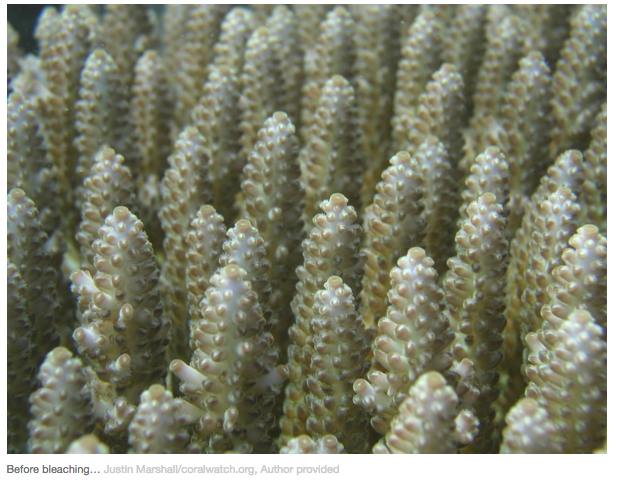
During bleaching, as the symbiotic algae depart, you can see the beautifully coloured polyps. Sometimes polyps are transparent and we see only the white skeleton beneath. Other polyps may be brightly coloured, as seen here.
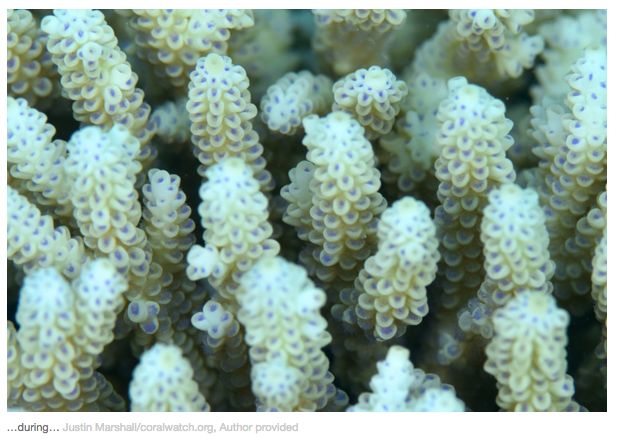
But whether white or fluorescent, these corals are far from happy. Once the final stage of the bleaching process is reached, it is likely the coral has been stressed for days or weeks. From here on, it may recover slowly – by re-acquiring its symbiont friends – or it may die, having run out of energy in the absence of the symbiotic algae that provide it with carbohydrates.
What often happens next is that the coral is covered with a film of turf algae, which takes over the parts of the reef previously colonised by healthy coral.
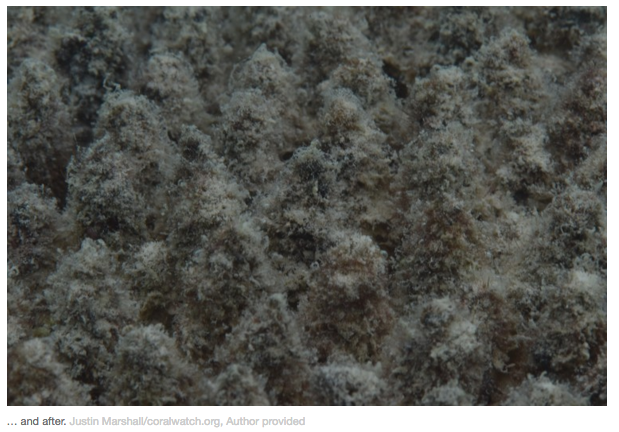
Bleaching can be strangely beautiful
Unfortunately, what we are now seeing on the northern third of the Great Barrier Reef is the death of many of these beautiful organisms. But, as noted above, the bleaching can in some cases be weirdly beautiful, as the corals shed their algal cloaks and reveal themselves.
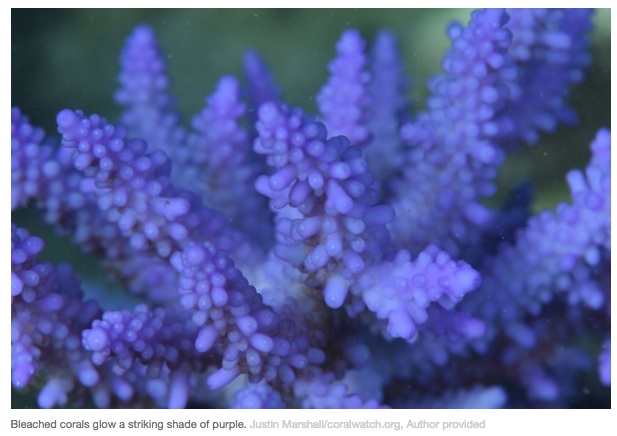
These pictures show a variety of heavily bleached corals, with almost no remaining symbiotic algae. From this point it is a long, slow road to recovery – even those corals that survive will remain metabolically and reproductively compromised for months.
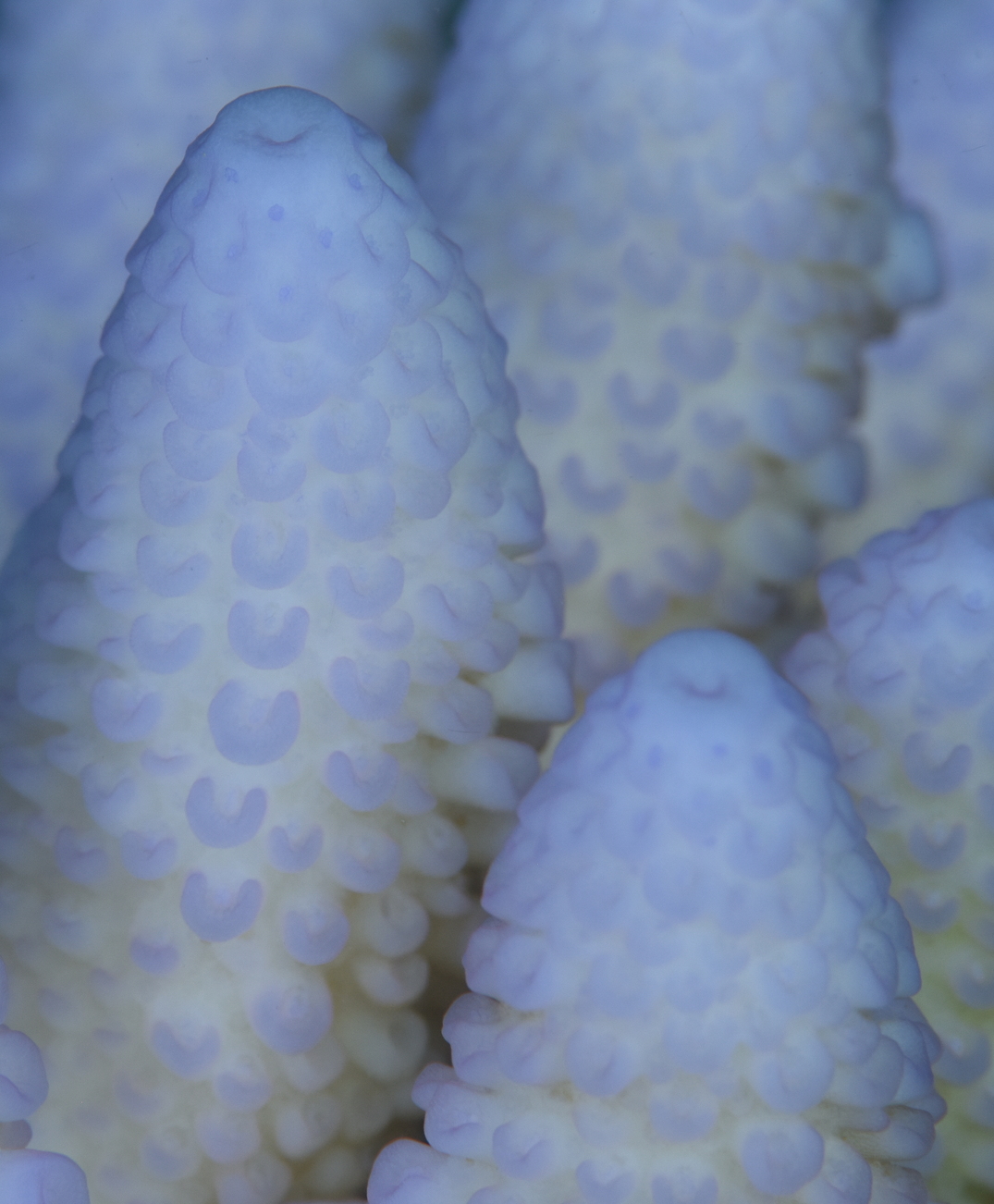

The amazing colours are pigments present in the coral polyps themselves. They are often fluorescent – hence the day-glo appearance of some corals and their amazing fluorescence on torch-lit night dives.
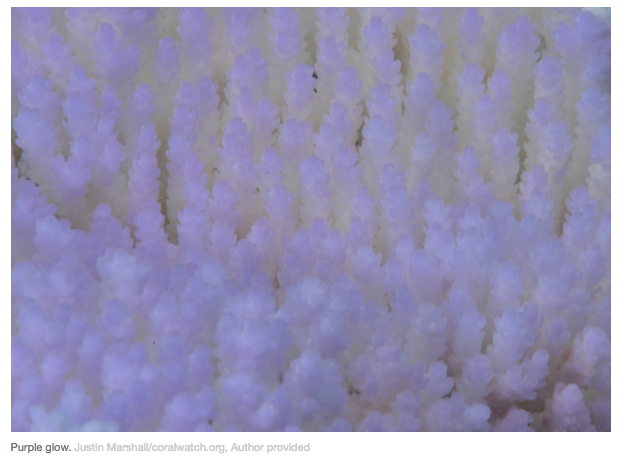
Some healthy corals display such vivid blues and other colours naturally, not during a bleaching event. But these corals are rare. What we are seeing on reefs in northern Queensland is certainly bleaching.

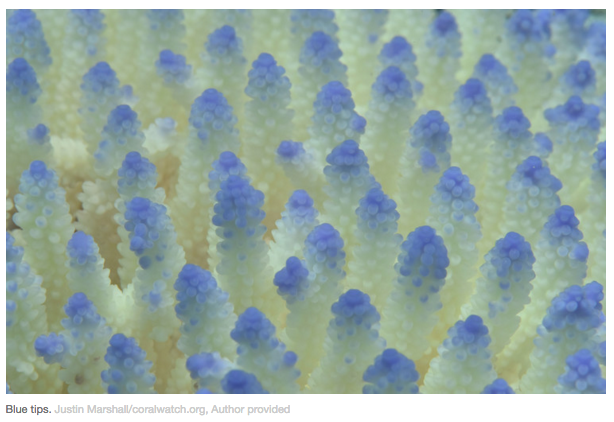

Algal overgrowth
When the polyps die, macro or turf algae take over – a process that is already evident along parts of the 800 km of worst-affected Great Barrier Reef.

Especially in warm or nutrient-rich waters, these algae outcompete any coral trying to settle or spread on the reef, taking over areas that corals previously dominated.
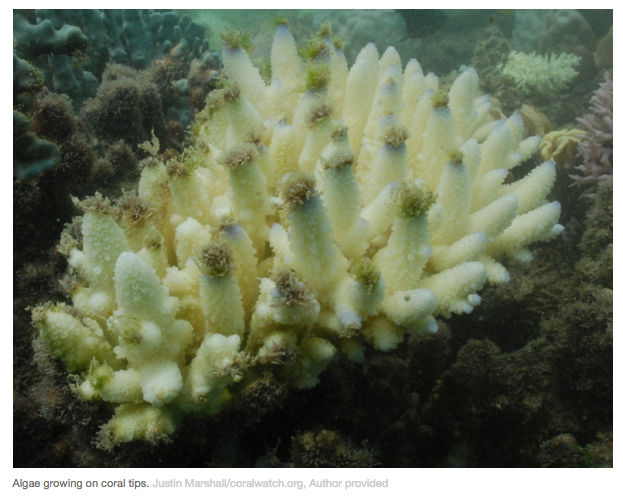
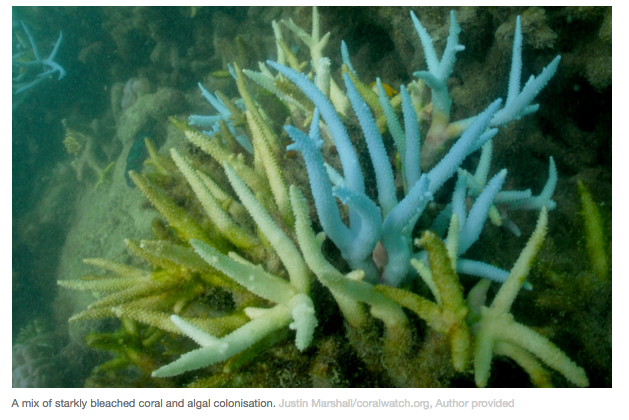
Fish losing their homes
Not only is the turf algal community uglier than healthy coral, but it means the other species that depend on the coral lose their livelihoods too. Eventually, the reef structure itself breaks down, meaning that many fish species will need to move on or die.
That includes fish that feed on coral, such as this Okinawa goby…

… and those that just use it for shelter, such as this black damselfish juvenile.
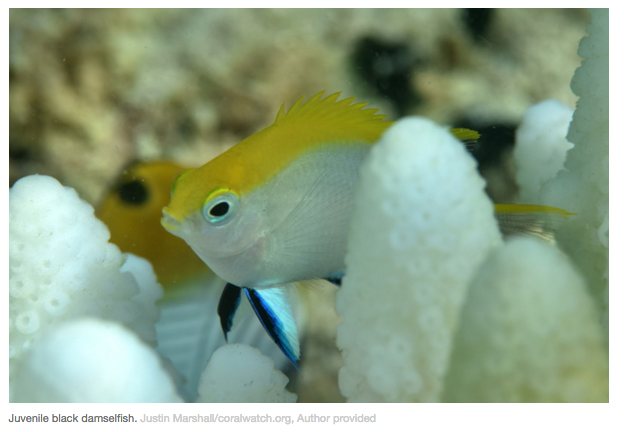
The turquoise-blue chromis damselfish form huge clouds or schools over coral heads, and use coral branches for shelter when predators come along. The picture immediately below was taken before bleaching, while the one after that shows the fish on a bleached colony.
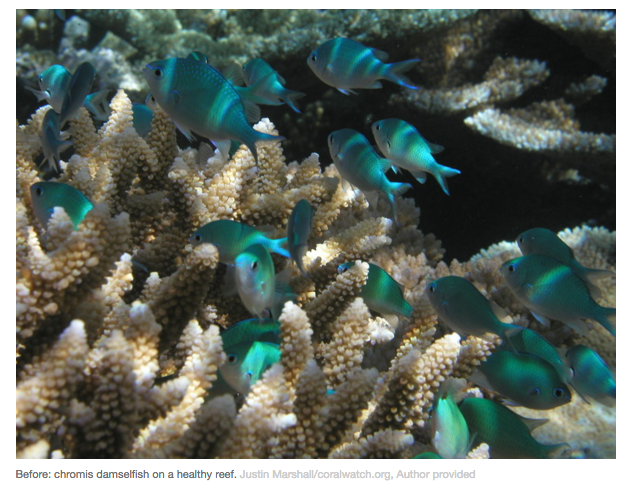
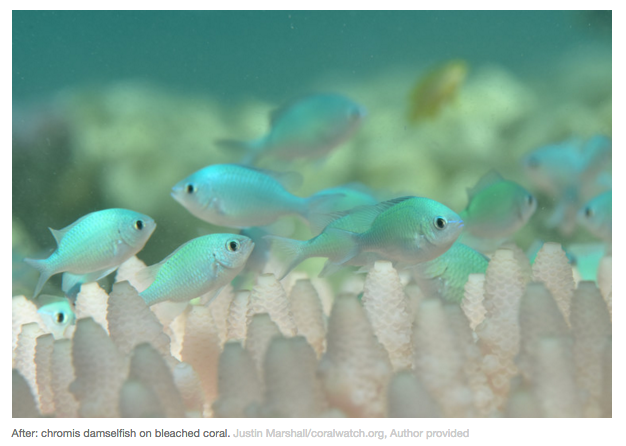
Anemones (which are close relatives of corals) are also prone to bleaching, which causes similar problems for the fish that use them for shelter.
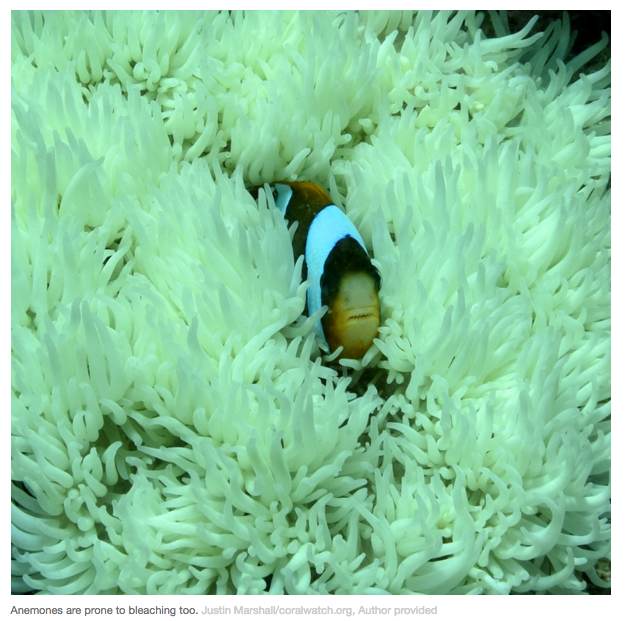
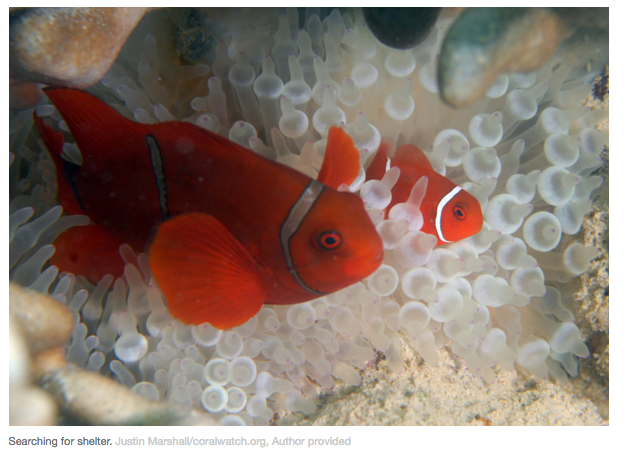
Here are some more before and after photos, showing the effects of bleaching on the anemones that species such as clownfish use as a refuge.


Living with coral… or without it
When I saw the coral this perky little blenny is sitting in, I was convinced I was looking at a healthy colony! Maybe Lizard Island was not 100% bleached after all.
Unfortunately, closer examination shows that the coral head has died and a thin film of algae covers the branches. The little blenny is farming his patch and cropping the algae so that it does not become overgrown.
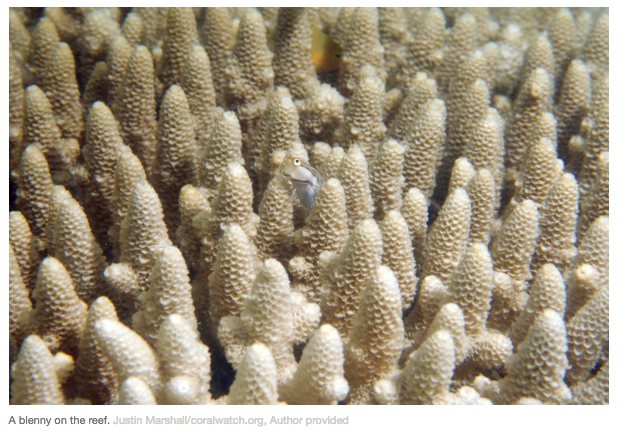

One-third of all marine life spends at least part of its life cycle on a reef. What happens when these reefs disappear?
Current predictions are that coral reefs worldwide could be gone within 25 years. How much will be left after this global bleaching event? How much will be left for future generations?
Given the globally accepted link between carbon emissions, climate change and reef bleaching, the decision to approve the Carmichael coal mine in Queensland right next to the Great Barrier Reef really is adding insult to injury.
The continued loss of the Great Barrier Reef is an environmental tragedy and a huge blow to all Australians who cherish this natural wonder and to the tourists who flock here to see the reef – particularly after seeing David Attenborough's new documentary on it.
Further afield, coral bleaching is a potential humanitarian crisis in countries that rely on reefs for food and basic livelihoods. Let's not forget that when Australia burns or sells coal it is contributing to this global problem as well.
This article originally appeared on The Conversation
READ THIS NEXT: Indonesian palm oil fires cause haze that covers 7 countries
1 Million Women is more than our name, it's our goal! We're building a movement of strong, inspirational women acting on climate change by leading low-carbon lives. To make sure that our message has an impact, we need more women adding their voice. We need to be louder. Joining us online means your voice and actions can be counted. We need you.
